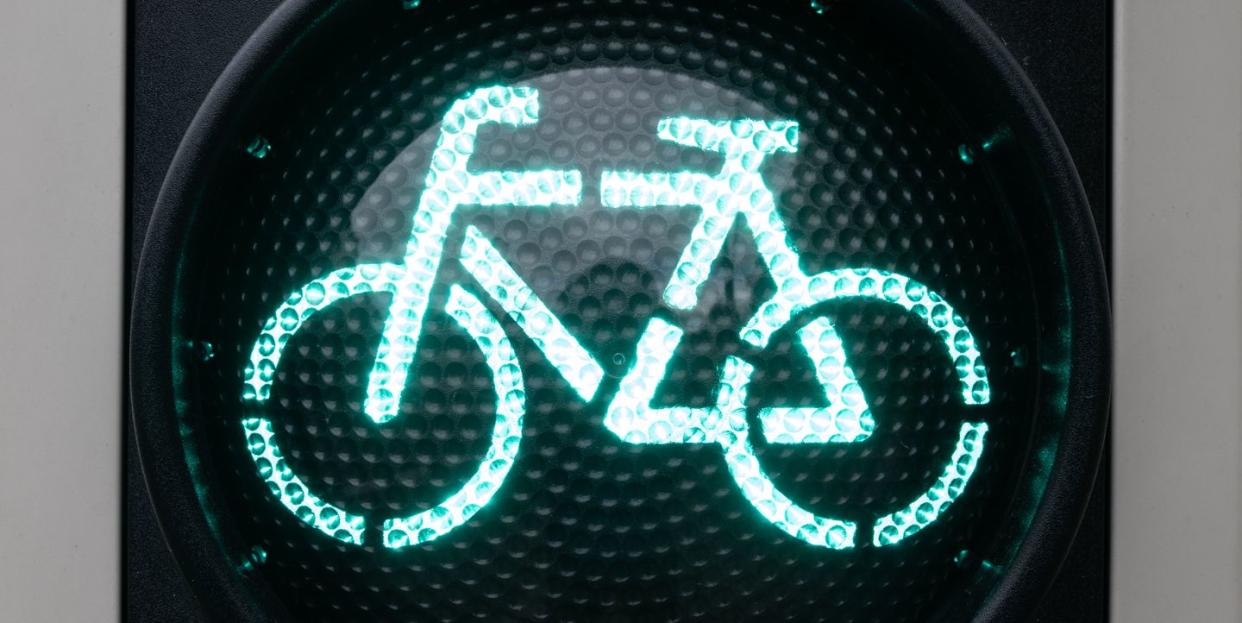Do Drivers Even Know the Laws That Protect Cyclists? Do You?

Did you know that many drivers think the “Share the Road” signs are aimed at cyclists? Of course the intended purpose is the opposite, to remind drivers to be vigilant and considerate of more vulnerable, slower-moving modes of transportation on the road.
And what about “taking the lane,” when a cyclist moves to the middle of the traffic lane because there’s no shoulder or it feels too dangerous to have a car pass? Perfectly legal and the smartest course of action in some situations.
Generally, people riding bikes are treated by the law the same as people driving vehicles —they have similar rights and responsibilities.
But a 20-pound bike is a lot different from a 5,000-pound vehicle, so several laws have been passed recently to keep cyclists and other more vulnerable road users safe.
For instance, most states now adhere to the 3-feet law, which says that the drivers of vehicles must give cyclists 3-feet when passing. And six states require vehicles to completely change lanes when passing a cyclist, if more than one lane is present.
Former World Tour cyclist Phil Gaimon, who spends an exceptional number of hours biking the roads around Los Angeles (a place with a lot of people driving cars), has become an advocate for cyclists and their rights on the road.
He’s created several informative YouTube videos on the matter, including one from earlier this year, about an encounter he had with a driver in Newport Beach. He worked with Bike Legal to clearly explain how to navigate scary interactions with drivers.
“Most people [driving cars] don’t think cyclists are even allowed on the road,” Gaimon told Bicycling. “They think we’re supposed to be on sidewalks and not in their way.”
Gaimon talks specifically about a new set of laws that went into effect in California this year. The California OmniBike Bill gives people who bike more rights on the road. And Gaimon is hoping other states pass similar laws.
But equally as important as passing such bills and laws, is educating the public so that they actually follow the rules. Many times, as Gaimon says in the video, police officers aren’t even aware of the laws.
“I’ve had a dream of starting a GoFundMe to buy a Super Bowl commercial,” Gaimon said. “Everybody chips in and we make a Super Bowl commercial, 30 seconds, just to personify cyclists.” That’s one idea to blast the nation with a message that cyclists are real people who belong on the roads, and that there are laws to protect them.
In addition to regulations about passing cyclists on the road, the new California bill addresses intersection protocol. Now, people on bikes follow the same rules as pedestrians at intersections. When the walk sign goes on to allow pedestrians to cross before vehicles, bikes may also use the 7-second head start to cross the street.
New California laws also allow e-bikes on all roadways and bike paths, but still allow communities to ban them from equestrian and hiking trails. This will allow people to fully adopt e-bikes as a safe way to commute and run errands, which helps reduce car traffic and carbon emissions.
But no matter how many new laws are passed, people still react incredibly emotionally out on the roads. People are upset about sitting in traffic (another reason to get out on a bike instead of a car) or are amped up from some other situation. Gaimon goes into all encounters with drivers assuming they’re already “at an eight” on the scale of anger.
Generally, Gaimon says that as a cyclist, it’s best not to engage someone who is angry and behind the wheel of an automobile. Cars can pretty easily become weapons.
His advice, if you’re comfortable having a conversation with someone who likely just threatened your life, do it calmly. “If you have a chance to patiently explain it and not get yourself shot, keep it simple. I try to come at it from a purely vulnerable and scared point of view.” Gaimon suggests saying something like, “Just so you know, that was super scary for me, and here’s what the law says…”
If you need advice on a specific situation, or want to learn more about your rights as a cyclist on the roads, Bike Legal and The Cyclist Lawyer have loads of information to help you stay safe.
You Might Also Like

